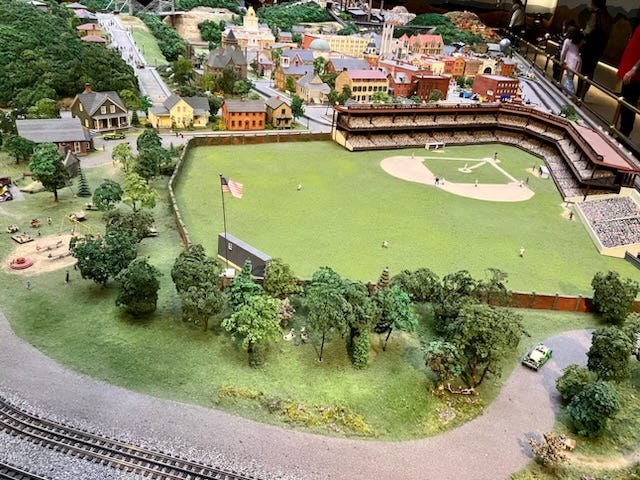Points in Pittsburgh: Miniatures in Diorama
Miniature Railroad and Village at Carnegie Science Center showcases pre-1940 Western Pennsylvania
Miniatures in diorama have enticed and fascinated people for generations. The word diorama—a term, like so many words, which originates with the Greeks (di denotes through; orama denotes that which is seen)—came into use during the 19th century in France. Diorama means through that which is seen. Pittsburgh’s grandest diorama occupies a room on the second floor of a building on the Ohio River’s northern shore.
In this diorama, which must be seen, heard and studied to be appreciated, a miniature railroad runs through Western Pennsylvania towns, cities, farms, parks and lands. The exhibit is a byproduct of what began as a hobbyist’s private property, which moved to the Institute for Popular Science, which was subsumed by Pittsburgh’s Buhl Planetarium and, finally, in 1991, moved to the Carnegie Science Center. The miniature display in O railroad scale appears in scenery recreating pre-1940 regional history. Recently, during various research vis…
Keep reading with a 7-day free trial
Subscribe to Autonomia to keep reading this post and get 7 days of free access to the full post archives.




